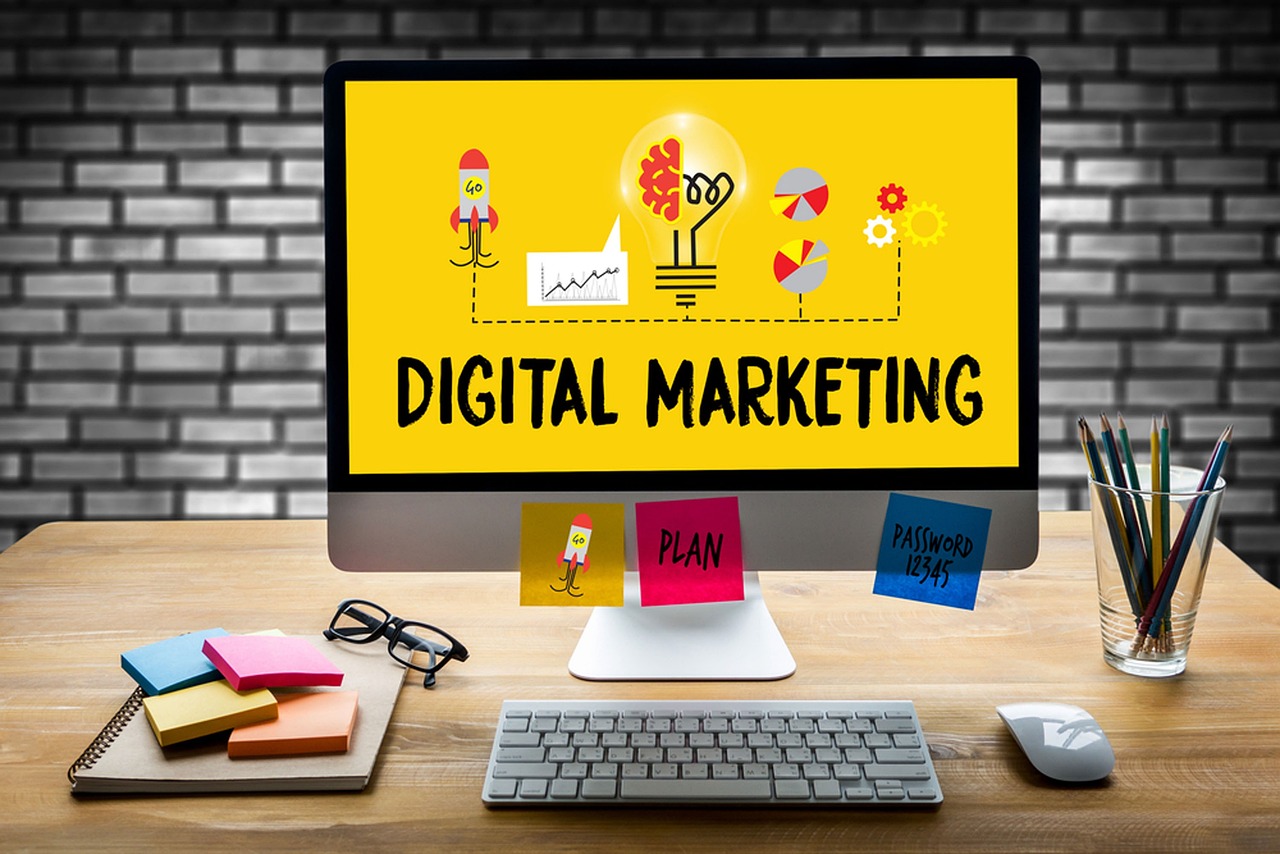Today, social media marketing is key to boosting your online presence. It helps businesses improve their online branding and grow their digital footprint. Social platforms let you connect with your target audience, increase engagement, and grow your business.
It’s crucial for businesses to understand the power of social media marketing. By planning carefully and acting strategically, you can attract new customers. You can also build lasting relationships with them.
Key Takeaways
- Social media marketing is vital for boosting your online presence.
- Effective strategies can enhance online branding and increase your digital footprint.
- Engagement with the target audience is crucial for business growth.
- Strategic planning and targeted actions are key to successful social media marketing.
- Building lasting relationships with customers through social platforms is achievable.
The Importance of Social Media Marketing
Social media marketing is vital in today’s digital world for businesses big and small. It broadens brand visibility, helping companies reach a wider, varied audience. This market reach spreads the brand’s message across different areas and people, establishing a worldwide presence.
Enhanced customer engagement is another key advantage. Platforms like Facebook, Instagram, and Twitter allow brands to connect directly with their audience. They can answer questions, solve problems, and build a community. This interaction builds loyalty and makes customers feel important and listened to.
Social media marketing also grows market reach. It uses the huge user bases of popular platforms to target specific markets and segments better than old marketing methods. This precise targeting makes marketing smarter and more impactful, using fewer resources for more effect.
The next table shows some major aspects of social media marketing and their advantages:
| Facet | Benefit | Outcome |
|---|---|---|
| Brand Visibility | Increased Audience Reach | Greater Awareness |
| Customer Engagement | Enhanced Interaction | Stronger Loyalty |
| Market Reach | Targeted Marketing | Effective Campaigns |
Developing a Content Strategy for Social Media
Creating a strong content strategy is key for doing well on social media. It’s important to know your audience, make content that grabs their attention, and post consistently. Doing this will boost your online visibility and engage your audience more deeply.
Understanding Your Audience
It’s vital to know who your audience is and what they like. Use analytics and market research to get insights. By knowing your audience’s likes, habits, and who they are, you can make content that fits what they’re looking for.
Creating Engaging Content
The heart of any content strategy is in making content that matters and grabs attention. Getting your audience to engage is essential for creating a devoted following. Using striking visuals, educational videos, or engaging posts can make your content hit the mark with your audience and encourage them to interact.
Scheduling and Consistency
Posting consistently keeps your audience engaged. A content calendar helps you post regularly and at the right times. A well-thought-out calendar keeps your strategy organized and simplifies scheduling, helping to maintain interest over time.
Leveraging Influencer Marketing
Using influencer marketing can greatly expand a brand’s visibility. Collaborating with brand influencers helps build genuine relationships. This, in turn, boosts brand awareness significantly.
Finding the Right Influencers
Choosing suitable influencers is key to campaign success. First, examine the influencer’s followers to make sure they match your target audience. Use tools like BuzzSumo and HypeAuditor to find influencers who share your brand’s values.
Building Partnerships
Creating strong partnerships with influencers requires mutual benefits. Start with clear talks and agree on expectations to build trust. A written agreement should cover what needs to be done, when, and payment details. This makes working together smoother.
Measuring Impact
It’s essential to check if your influencer marketing is working. Look at engagement, conversion rates, and ROI. Use Google Analytics and Socialbakers for detailed insights into how your influencers are doing.
| Metric | Definition | Tools |
|---|---|---|
| Engagement Rate | Measures the level of interaction between the influencer’s content and their audience. | BuzzSumo, HypeAuditor |
| Conversion Rate | Percentage of followers who take a desired action, such as purchasing a product. | Google Analytics, Socialbakers |
| ROI | Assessment of the financial return on the investment made in influencer marketing. | Google Analytics, Socialbakers |
Community Management Best Practices
Building strong customer loyalty is key, and effective community management does just that. It boosts your brand’s online reputation. A strong sense of community engagement makes customers feel important and connected.
- Active Listening: Regularly check what your community says. Quickly deal with concerns and recognize positive feedback.
- Encourage Interaction: Let members interact with your brand and each other. Use posts, polls, and discussions for this.
- Consistency: Always be present in your community. This builds trust and shows you’re committed to satisfying customers.
Dealing well with both good and bad feedback is vital. Always respond to negative comments with empathy and offer solutions. This way, your online reputation gets better.
Here’s a look at the best practices for managing a community:
| Best Practice | Impact |
|---|---|
| Prompt Responses | Increases customer loyalty |
| Regular Engagement | Boosts community engagement |
| Empathy in Communication | Makes online reputation stronger |
By using these strategies, brands can grow their online communities well. This leads to greater customer loyalty and a stronger online reputation.
Utilizing Social Media Analytics
It’s key to know how to use social media analytics well. This means tracking important measures and looking at the results closely. Doing this helps improve your online campaigns.
Tracking Key Metrics
You must track important metrics to see how your social media is doing. Keep an eye on these:
- Engagement Rate
- Click-Through Rate (CTR)
- Conversion Rate
- Impressions and Reach
These numbers tell you how people interact with your content. This helps figure out how well your social media works.
Analyzing Results for Improvement
After tracking, you need to study the data. Using good analytics tools lets you understand your campaign better. You find out what works and what doesn’t.
This continuous review helps make your social media plans better. By doing so, you aim for better results and a stronger online presence.
Effective Strategies for Paid Social Ads
Implementing a successful advertising strategy for paid social ads can boost your brand’s presence online. Understanding the details of paid advertising helps. Doing so can result in better returns on investment for social ads.

First, figure out who your audience is. Knowing the profiles, interests, and online habits of your audience is essential. Platforms like Facebook, Instagram, and LinkedIn offer tools to target your ads correctly.
Then, make your content engaging and eye-catching. Your ads must grab attention and prompt people to act. Use top-quality images, engaging videos, and strong copy to deliver your message.
Setting a smart budget is another key step. Align your budget with your advertising strategy and keep an eye on spending. It’s wise to start with a small budget to test ads. Then, invest more in the ones that work best.
Also, you should always be tweaking your ads. Utilize analytics to monitor metrics like click-throughs, conversions, and cost per action. Use this data to make your ads better over time.
| Strategy | Benefits |
|---|---|
| Target Audience Analysis | Higher engagement rates |
| Compelling Content | Increased conversions |
| Budget Optimization | Better ROI |
| Continuous Optimization | Improved ad performance |
By using these strategies, brands can make their paid ads more effective. This leads to better social ads ROI. Keep evaluating and refining your strategies to stay on top of market changes.
Power of Social Listening in Marketing
Talking with people on social media has changed the way brands talk to customers. A key part that has come up is social listening. It means watching online talks to see what people say about a brand or field. This method is more than just talking back—it lets brands get valuable consumer insights and change their plans using real data.
With social listening tools, marketers can deeply understand what customers like and do. These tools gather info from many social media sites. This lets companies spot trends and feelings. So, businesses can make their marketing fit what their audience needs and wants. This makes the brand sentiment better.
Let’s look at how social listening can change marketing plans:
- Real-time Tracking: Watch brand mentions as they happen to know what people think now.
- Competitor Analysis: See how your brand feels compared to others to find good and bad points.
- Trend Identification: Spot new trends to stay ahead.
- Customer Engagement: Quickly answer customer feedback to make better connections.
In short, social listening gives priceless consumer insights that have a big effect on marketing choices. By knowing what the audience feels and watching online talks, brands can make sure their plans are right and work well.
| Benefits of Social Listening | Impact on Brand |
|---|---|
| Real-time insights into consumer behavior | Improves marketing strategy alignment |
| Enhanced customer engagement | Increases customer loyalty |
| Competitor analysis | Identifies market opportunities |
| Trend identification | Keeps the brand current |
Social Selling Tactics to Increase Sales
Social selling has changed how businesses sell today. By using social media, companies can focus on building better relationships. This way, sales teams can connect more with their audience. We’ll explore how targeting the right customers is key to turning leads into loyal customers.
Building Relationships Through Social Media
At the heart of social selling is the idea of growing relationships. Social media sites like LinkedIn, Facebook, and Instagram let businesses talk directly to possible buyers. By understanding what people need and want, companies can tailor their content. This makes their offerings more appealing and personal to their audience.
- Engage regularly: Consistency in communication helps build trust and rapport.
- Provide value: Share insightful content that addresses common pain points of your target audience.
- Listen actively: Use social listening tools to stay updated on conversations around your brand and industry.
“Listening is the new prospecting.” – Jim Keenan, Author of Not Taught
Targeting Potential Customers
Finding and targeting the right customers is vital for social selling. It’s important to know who your audience is and what they need. By using the targeting tools on social media, you can improve your reach and connect with the right people.
- Leverage data: Utilize analytics tools to gain insights into customer behavior and preferences.
- Custom audiences: Create targeted campaigns using refined criteria such as demographics, interests, and purchase history.
- Personalized outreach: Craft messages that speak directly to the needs of your potential customers.
By mixing relationship marketing with exact customer targeting, companies can make the most of social selling. This can lead to more sales and loyal customers over time.
Encouraging Employee Advocacy on Social Media
Employees can be top-notch brand supporters. A smart move is kicking off extensive employee advocacy programs. These initiatives let employees share their good vibes. They also broaden the company’s reach on social media.

For advocacy programs to thrive, strong internal engagement is key. It’s about making a workspace where employees feel important and eager to join. Through regular training, they gain the right skills to champion the brand.
- Establish Clear Guidelines
Clear guidelines help employees know the right content to share. They ensure posts reflect the company’s core values.
- Recognize and Reward Participation
Rewards and recognition boost employee engagement. They show gratitude for every employee’s input, making them feel valued.
A good employee advocacy program boosts a brand’s image online. Employees share their genuine viewpoints, adding to the company’s trustworthiness. This builds stronger bonds with the audience.
| Key Components | Benefits |
|---|---|
| Internal Engagement | Boosts motivation and participation |
| Guidelines and Training | Ensures consistency and professionalism |
| Recognition and Rewards | Encourages sustained participation |
Case Studies of Successful Social Media Campaigns
Learning from real successes helps craft your social media plan. We look at well-known brands and their tactics for success. You’ll get practical tips and strategies for your campaigns.
Brand A Success Story
Starbucks’ “#RedCupContest” on Instagram is a great example. They used customer photos to generate excitement. This approach brought tons of creative posts and high engagement. It boosted the brand’s visibility and interaction with customers.
Brand B Success Story
Nike’s “Breaking2” campaign mixed Twitter and YouTube beautifully. They live-streamed a marathon to beat two hours. This streaming attracted a worldwide audience. With interesting stories and lots of viewers, they created buzz and showed how to use different platforms together.
Lessons Learned
These stories teach us valuable lessons. First, customer content can make your brand more engaging. Second, using various social media sites can broaden your campaign’s reach. Lastly, it’s crucial to have clear goals and watch your performance. These tips can help you succeed in social media marketing.
FAQ
What is a social media marketing strategy?
A social media marketing strategy is a detailed plan. It highlights your goals on social media, the methods to achieve them, and how you’ll track progress. It’s key for a solid online presence and meaningful audience connection.
How does social media marketing increase brand visibility?
Through various platforms like Facebook and Instagram, social media marketing boosts brand visibility. By posting engaging content and interacting, brands grow their recognition and followers.
What is a content strategy in social media marketing?
A content strategy is about planning and creating content that speaks to your audience on social media. It’s figuring out what they like, making engaging posts, and sticking to a schedule. Using a content calendar helps stay consistent.
How can businesses leverage influencer marketing?
Businesses tap into influencer marketing by partnering with influencers who reflect their brand’s values. These influencers reach a bigger audience. It’s also important to track the campaign’s success to see its value.
What are the best practices for community management?
The top tips for community management include talking with your online community and handling interactions quickly. Creating a trustworthy and loyal environment is vital. This approach keeps customers loyal and boosts your brand’s image.
How can social media analytics improve marketing strategies?
Social media analytics let businesses track important things like engagement and follower growth. This data guides better decisions, helping to refine strategies and increase returns.
What are effective strategies for paid social ads?
For successful paid social ads, know your audience, craft captivating ads, and tweak your campaigns using data. This approach helps improve returns and meets advertising objectives.
How does social listening benefit marketing efforts?
Social listening means keeping an eye on social media for brand mentions and industry chatter. It offers rich insights and understanding of what the crowd thinks. Marketers can use this to fine-tune strategies and cater to customer needs better.
What are social selling tactics?
Social selling involves connecting with potential buyers on social media, sharing useful content, and using data for targeting. These approaches turn prospects into loyal customers, boosting sales.
What is employee advocacy in social media marketing?
Employee advocacy programs motivate employees to share positive company experiences on social media. This can broaden brand exposure and credibility through their networks, making them potent brand advocates.
Can you provide an example of a successful social media campaign?
Great social media campaigns need a clear strategy, compelling content, and active community engagement. For instance, Nike’s ‘Just Do It’ campaign used influencers and user content to massively increase engagement and market presence.






